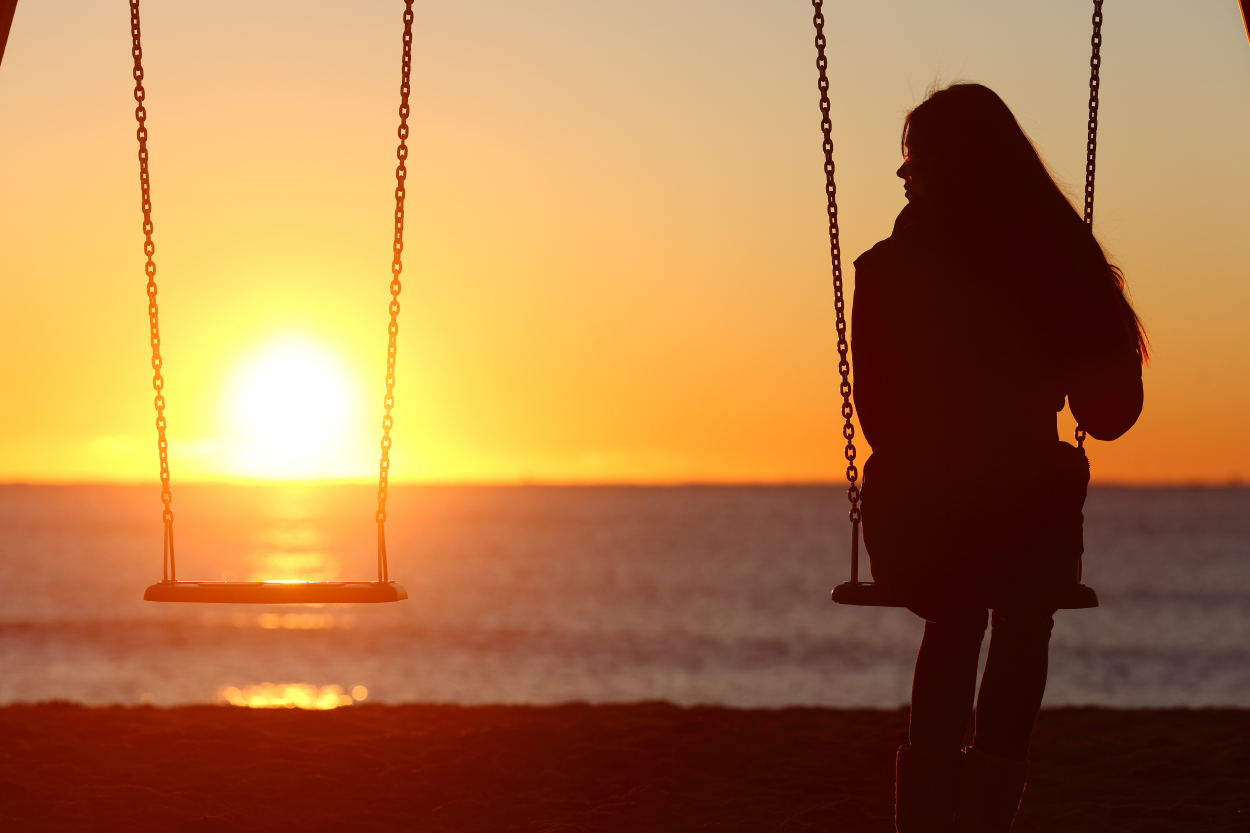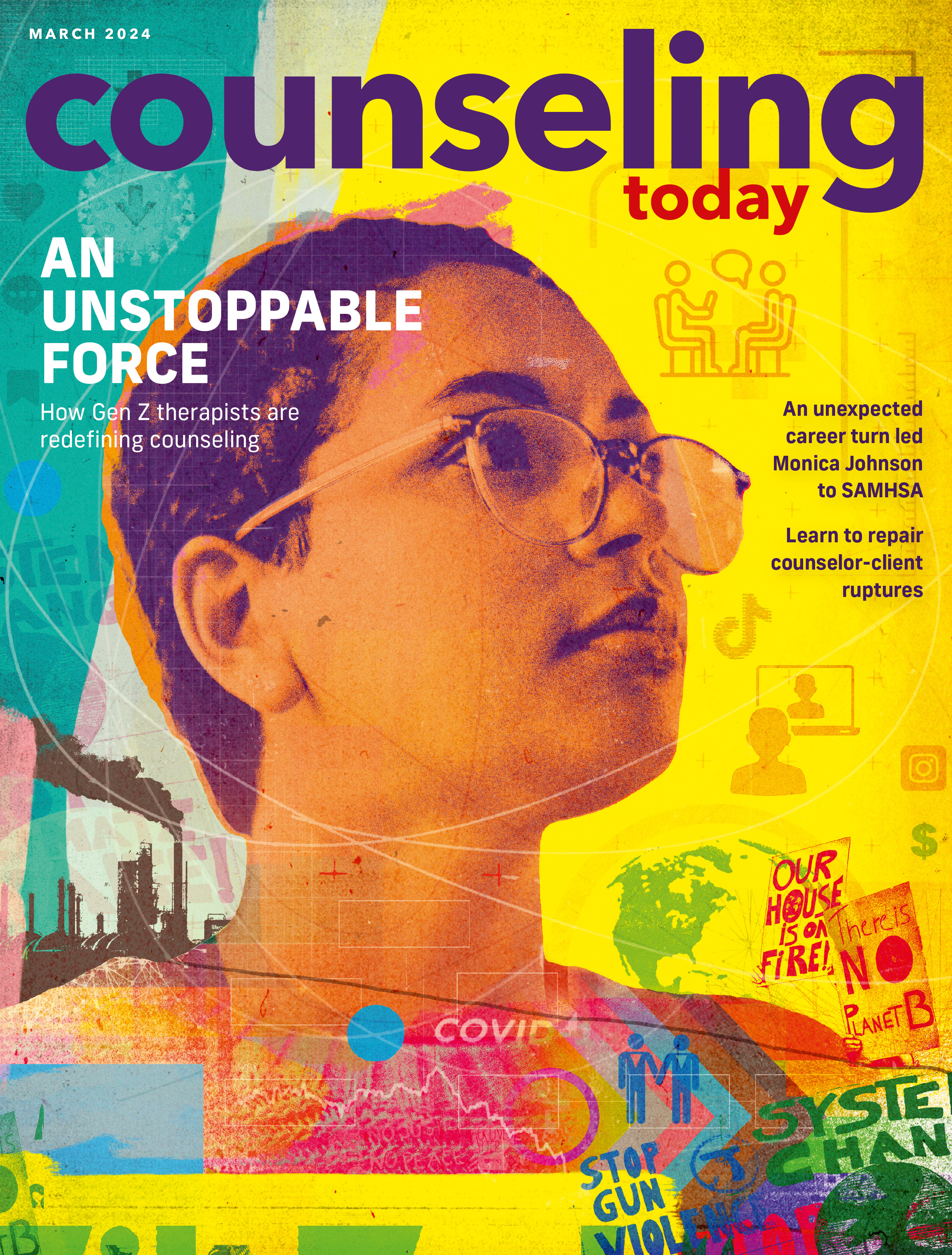Addressing the loneliness epidemic
October 2023

Rates of loneliness have been increasing over the past two decades, and the COVID-19 pandemic only seemed to exacerbate the issue. In May, the U.S. Surgeon General released an advisory declaring loneliness a public health epidemic and noted that approximately half of U.S. adults are experiencing levels of loneliness.
Counselors are noticing the effect this public health crisis is having on their clients. Amy Lasseter, a licensed professional counselor (LPC) in Georgia, estimates about 80% of her clients are currently suffering from loneliness in some capacity, and she believes the number has increased over the past few years.
This increase in isolation and loneliness affects both physical and mental health. In terms of mental health, loneliness is associated with depression, anxiety, cognitive decline, a poor immune system and early morbidity, according to the article "The lonely brain: Unraveling the neuroscience and psychology of isolation,” published by Neuroscience News in July.
In the past few years, kids have missed out on essential social interaction experiences because of the need to use virtual learning during the pandemic, and inflation has also played a role and often caused adults to choose to stay home rather than go out with friends just to avoid high costs, says Paul Krauss, an LPC and the clinical director for Health for Life Counseling in Michigan.
Despite living in an age of social media and constant connection, more people are feeling isolated. And that is because loneliness is complicated and multifaceted. One person can be physically alone without feeling lonely. Another person may be physically around people but feel lonely, Krauss explains.
He says there are two main ideas involved in loneliness: the physical act of being alone and one’s perception of being alone. Krauss finds that a person’s perception of loneliness is often the most important factor because if a person doesn’t feel deeply connected to others in a meaningful way, they’re likely going to experience loneliness no matter what.
“As counselors, we need to do our best to connect with the client to understand their unique story and experience of loneliness before we can help them make any changes,” he says. “That means counselors need to deeply understand why a client feels alone, whether they are in proximity to people or not.”
Rethinking connection after the COVID-19 pandemic
The COVID-19 pandemic has irrevocably changed the way we communicate with each other and how we interact with the world.
“There was an incredible amount of grief and loss experienced during the pandemic,” Lasseter says. “If you were struggling with addiction, people couldn’t meet with their groups. … Buses stopped running, which impacted … clients as it was their only form of transportation. And that doesn’t cover people who lost someone to COVID and couldn’t be at their bedside during that time.” She says these factors only increased the loneliness her clients felt.
“The loss of stability and the predictability a person once had in their life was unexpectedly stripped away without much warning or indication of when it would return. It was overwhelming for many people, and the experience of this is another layer, or trauma, for the person or client to carry,” she adds.
Students were also heavily affected by loneliness during the pandemic, and this social isolation has affected their experience in the workplace. After spending a significant portion of their college years in virtual classrooms, many recent graduates are now working remotely, so they haven’t been to a physical office or met their co-workers in person.
Although remote work has many benefits, it can cause new employees to miss out on an important part of socializing professionally. Each developmental stage in a person’s life is a transitional time — one that comes with losses and new beginnings. When a young person leaves high school, they leave some friends behind, but then in college or at work, they make a new set of friends, says Gerald (Jerry) Opthof, an LPC in New Jersey who specializes in relationship and family issues. Because of the pandemic and remote work, “people have lost that steppingstone to build up more relationships and connections with others,” he notes.
Having more time alone during the pandemic may have also shone a light on issues many people were facing regarding loneliness and given people the chance to sit down and explore their feelings. “I think what the pandemic did is allowed some space and some reflection for people … to start feeling their emotions where maybe they were numbed out before. And so, I think that the pandemic showed people what was already there,” Lasseter says.
The effect of social media
Lasseter believes that a lot of people turn to social media because they feel it’s a safe place to interact with others, but some people have spent so much time interacting with others online that it is starting to hurt their in-person social skills, she adds.
“I think people are struggling more with loneliness because in some ways we’re more disconnected,” Opthof says. Although social media allows people to connect with others, it can also be harmful because people are only presenting curated bits of their lives, which can cause people to feel as though they’re missing out on the experiences they see. And sometimes it can make people feel lonely if they see their friends’ and families’ online posts about events and activities that they weren’t invited to.
“[We’re] only seeing the fantasy — the image people are putting out there,” Opthof explains. “It can make us lonely because everyone else seems to be happier and doing more than we’re doing.”
Our addiction to social media also prevents us from going out and making connections with others in person. Social media “is addictive; it’s pervasive,” says Krauss, who hosts the podcast The Intentional Clinician. “We can get hooked to the dopamine rush of using social media apps to entertain us for hours on end, distract us or [help us] zone out.” In other words, social media may not necessarily help people build stronger relationships with new people, he adds.
But social media isn’t all bad. It also allows people to stay in contact with others or find community events. Social networks and applications such as Bumble BFF and Meetup can help connect clients with people who share similar interests so they can meet in real life, Opthof notes. These apps also allow people to have control over their social interactions, which can help them become more confident before meeting others in person, he says.
Learning to reconnect
With the right mental health techniques and approaches, counselors can help clients start to overcome their loneliness. Lasseter works with her clients to help them reconnect with themselves and figure out what activities they enjoy doing. This allows them to connect with others through those activities and build a stronger sense of self.
She also encourages her clients to set goals for themselves. For example, Lasseter may ask a client to select a task or activity that will help them connect with others, such as starting weekly dinners with family or going on regular walks with a friend. And she has them set a reasonable time frame to accomplish this goal.
She and Opthof both use cognitive behavior therapy to help clients who are struggling with loneliness work on cognitive dissonance and black-and-white thinking. This approach helps clients understand the underlying thought process related to their unhealthy behaviors. By working together, the counselor can help the client “step out of the unhealthy behaviors, thus reducing the feeling of loneliness,” Lasseter notes.
For example, some of Opthof’s clients have told him they feel left out if they see social media posts of “all their friends and family” on vacation when they aren’t. When this happens, he challenges this unhealthy thinking by asking the client to think of people they know who aren’t on vacation. This helps recalibrate their thinking, he explains, because they realize they are not the only people who are not doing the activity.
Krauss is a fan of role-playing with his clients to prepare them for scenarios they may face during offline socialization. For example, if one of his clients wants to make more friends, then he may ask them to pretend they are at a bar or social gathering and try to befriend him. Throughout the exercise, Krauss will help the client learn to read social cues, engage in conversations, ask questions and get others to talk so they can create connections with others more easily when it comes time to go out in real life.
“Role-playing is important,” he says. “By practicing in the office, it may help decrease their anticipatory anxiety of actual social situations. By practicing conversations and even discussing strategies, a person may experience less fear of the unknown while increasing their ability to be authentically themselves in a situation with another person or a group.”
The counselors interviewed for this article agree that it’s the quality and strength of friendships that matter, not the quantity. Even developing just one or two friendships can help alleviate loneliness, Lasseter says. And being willing to try new things, such as hobby groups, can help people start to develop meaningful relationships with others.
Opthof cautions his clients to avoid the temptation to be on their phones when they are with others because if they are glued to their phones, they will probably still feel lonely and disconnected. “We need that connection,” he says. “We need to unplug [and] enjoy the time we have with people.”
////
Loneliness — By the Numbers
According to the 2023 U.S. Surgeon General report Our epidemic of loneliness:
- Approximately half of U.S. adults report experiencing loneliness, with some of the highest rates among young adults.
- Rates of social isolation are highest among older adults, but young adults are almost twice as likely as those over 65 to report feeling lonely.
- The amount of time the average American has spent alone has increased from 142.5 hours a month in 2003 to 166.5 hours a month in 2020 — the equivalent of a whole day.
- The lack of social connection can increase the risk of premature death as much as smoking up to 15 cigarettes a day.
- People in the U.S. who reported using social media for more than two hours a day had about double the odds of reporting increased perceptions of social isolation than those who used social media for less than 30 minutes per day.
According to a Gallup survey conducted in February:
- Loneliness has been in a steady decline since early 2021. This year, 17% of U.S. adults reported feeling lonely “a lot of the day yesterday,” compared with 25% of people who reported those feelings in March 2021.
- Young adults under the age of 30 (24%) and people in lower-income households (27%) experience higher levels of daily loneliness.
- Of those who reported being lonely, 33% had or were being treated for depression, nearly triple the level found among nonlonely respondents.
Samantha Cooper is a staff writer for Counseling Today. Contact her at scooper@counseling.org.
The views expressed in Counseling Today are those of the authors and contributors and may not reflect the official policies or positions of the editors or the American Counseling Association.
Search CT Articles
Current Issue
Sign Up for Updates
At consectetur ut viverra nunc placerat. Auctor penatibus venenatis, velit consectetur magna integer nullam tristique.



